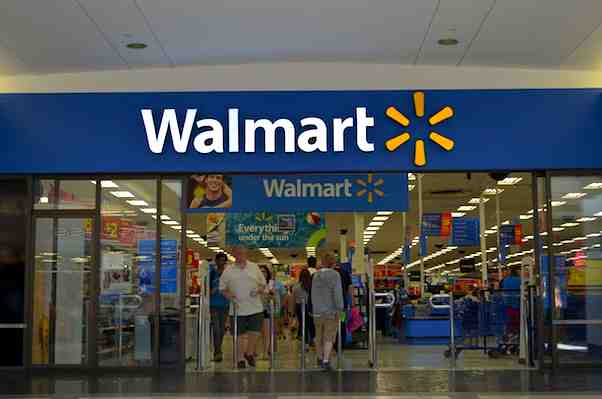
Walmart’s remote environment or macro-environment involves factors that determine the company’s success. These factors are best presented through the PESTEL/PESTLE analysis model. As a retail industry leader, Walmart continues to withstand the potential negative effects of threats in the political, economic, sociocultural, technological, ecological, and legal (PESTEL/PESTLE) aspects of its business. However, this success requires continued evaluation of the retail industry environment. These PESTEL/PESTLE factors also change over time, thereby imposing challenges for Walmart. These changes may present threats or opportunities. The retail company must exploit the opportunities and protect itself from threats. In using the PESTEL analysis, Walmart leaders and managers can determine which factors to prioritize in strategy development.
The external factors in the remote or macro-environment of Walmart, based on the PESTEL/PESTLE analysis, indicate the need for strategic focus on economic, sociocultural, and ecological concerns. Strategic formulation based on Walmart’s mission statement and vision statement is designed to target the trends identified in this PESTEL analysis.
Political Factors
Walmart considers political factors in the retail market, usually pertaining to government policies. In the PESTEL/PESTLE analysis model, politically active interest groups are also significant. The following are the political external factors in Walmart’s remote/macro environment:
- High stability of politics (opportunity)
- Political support for globalization (opportunity)
- Political pressure for higher wages (threat)
The remote/macro-environmental factors show that the retail business must address the threat of higher wages. This is a threat because it goes against the cost minimization essential in Walmart’s cost leadership generic competitive strategy.
Economic Factors
Walmart is under significant pressure from economic changes. Any such change leads to changes in the company’s revenues. Based on the PESTEL/PESTLE analysis model, the following are the economic external factors in Walmart’s remote/macro environment:
- Stability of major economies (opportunity)
- Continued growth of developing countries (opportunity)
- Decreasing unemployment in the United States (opportunity)
All these economic factors show that Walmart should exploit opportunities around the world. Emphasis should be on the fast-growing economies of developing countries, which have increasing demand for goods from retail firms.
Social/Sociocultural Factors
The social or sociocultural factors in the business environment of Walmart influence consumer perception and preferences. In the PESTEL/PESTLE analysis model, the following are the social or sociocultural external factors in Walmart’s remote/macro environment:
- Healthy lifestyle trend (opportunity)
- Cultural diversity trend (opportunity)
- Urban migration (opportunity)
These social/sociocultural factors present opportunities for Walmart. The company can increase its array of healthy products. Walmart can also increase the variety of its products to satisfy various cultural preferences. Moreover, the company can adjust its strategies to exploit increasing consumer demand in cities and surrounding areas.
Technological Factors
Walmart needs to address technological trends. In the context of the PESTEL/PESTLE analysis model, technologies affect the retail industry’s competitive landscape. The following are the technological external factors in Walmart’s remote/macro environment:
- Increasing business automation (opportunity)
- Business analytics or big data (opportunity)
- Increasing mobile device usage among consumers (opportunity)
Walmart can increase its investment in all three factors. In exploiting the opportunity in mobile device usage of customers, the company must boost its online presence. Online marketing and online selling increase Walmart’s revenues.
Ecological/Environmental Factors
The ecological or environmental factors significant in Walmart’s business pertain to environmental conservation concerns. Environmental conservation is now a popular principle. The following are the ecological external factors in Walmart’s remote/macro environment in this PESTEL analysis:
- Business sustainability trend (opportunity)
- Environmentally friendly products trend (opportunity)
To attain business sustainability, Walmart must improve operational efficiency. Technological innovation helps improve efficiency in business. Improved policies and standards on products sold at its retail stores can also strengthen the company in addressing these ecological factors.
Legal Factors
Walmart is subject to the requirements of laws and regulations. Based on the PESTLE analysis model, these external factors usually impose limits on retail firms. The following are the legal external factors in Walmart’s remote/macro environment:
- Food safety regulations (opportunity)
- Employment regulations (opportunity)
- Tax law reform (threat)
Tax reform is a potential threat if it leads to higher tax rates. Walmart must take food safety regulations as an opportunity to improve quality standards. Also, enhancing human resource management practices can exploit opportunities concerning employment regulations relevant to the retail business.
Recommendations – PESTLE/PESTEL Analysis of Walmart
This PESTLE analysis of Walmart shows that the company has more opportunities than threats in its remote/macro environment. The external factors present significant opportunities. The firm must take a proactive approach to address threats. However, the company’s efforts must focus on exploiting the opportunities identified in the retail business environment. Based on this PESTEL/PESTLE analysis, recommendations for Walmart include improvements to human resource management practices, investments in technology, enhancement of quality standards, and worldwide business expansion.
References
- Alekhyasri, N. N., Prasad, G. B., Pardhasaradhi, T., Reddy, A. P. V., & Bhargavi, M. (2024, June). Predictive Analysis for Retail: Sales Forecasting at Walmart. In 2024 3rd International Conference on Applied Artificial Intelligence and Computing (ICAAIC) (pp. 1018-1022). IEEE.
- Sharma, N., & Fatima, J. (2024). Influence of perceived value on omnichannel usage: Mediating and moderating roles of the omnichannel shopping habit. Journal of Retailing and Consumer Services, 77, 103627.
- U.S. Department of Commerce – International Trade Administration – Retail Trade Industry.
- U.S. Department of Labor – Summary of the Major Laws of the Department of Labor.
- Walmart Inc. – Form 10-K.
- Walmart’s E-commerce Website.